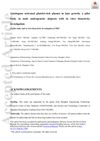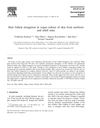Effects of Epidermal Growth Factor on Human Hair Follicle Growth In Vitro
April 2000
in “
Chinese Journal of Dermatology
”
TLDR Epidermal growth factor (EGF) boosts hair follicle growth and speeds up hair cycle transition.
The study investigated the effects of epidermal growth factor (EGF) on human hair follicle growth in vitro. Human hair follicles were cultured and divided into an EGF-treated group and a control group. Results showed that EGF significantly increased hair shaft and follicle elongation from day 1 to day 3 compared to the control group. Histological analysis revealed thickening of the lower outer root sheath and formation of a club hair-like structure in the EGF-treated group. Additionally, 3H-leucine incorporation indicated higher radioactivity in the hair follicle epithelium of the EGF-treated group, suggesting that EGF stimulated hair follicle epithelium growth and induced premature transition from anagen to catagen phase.



